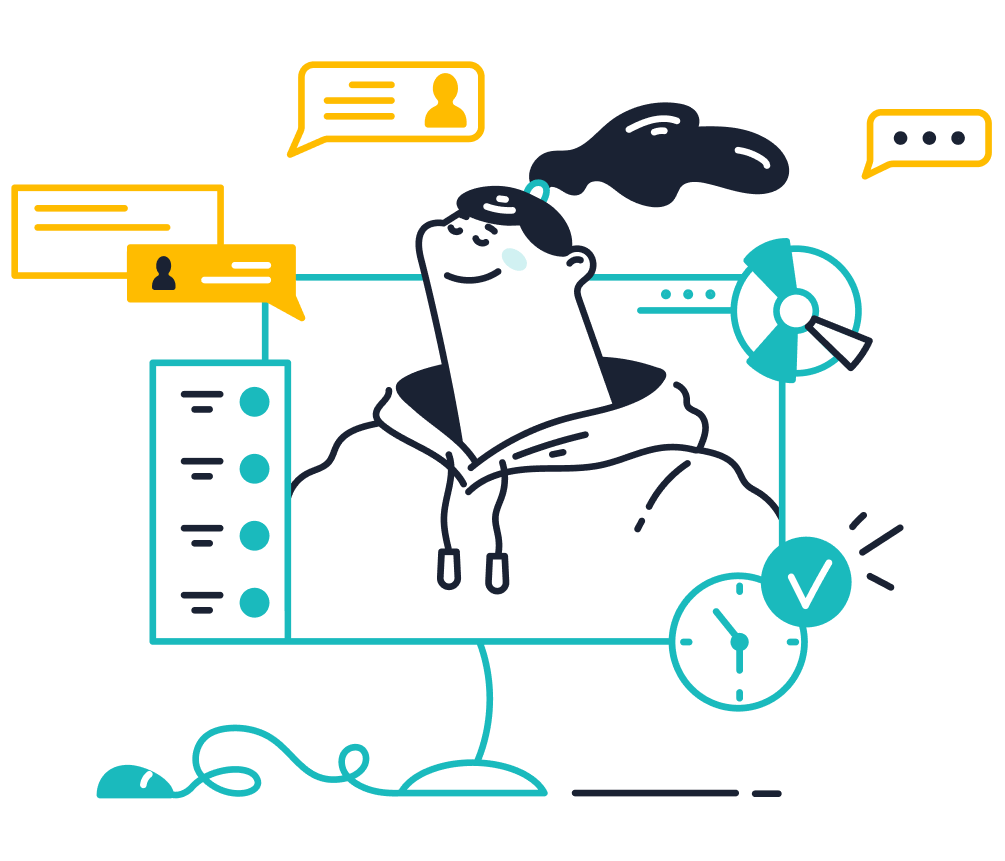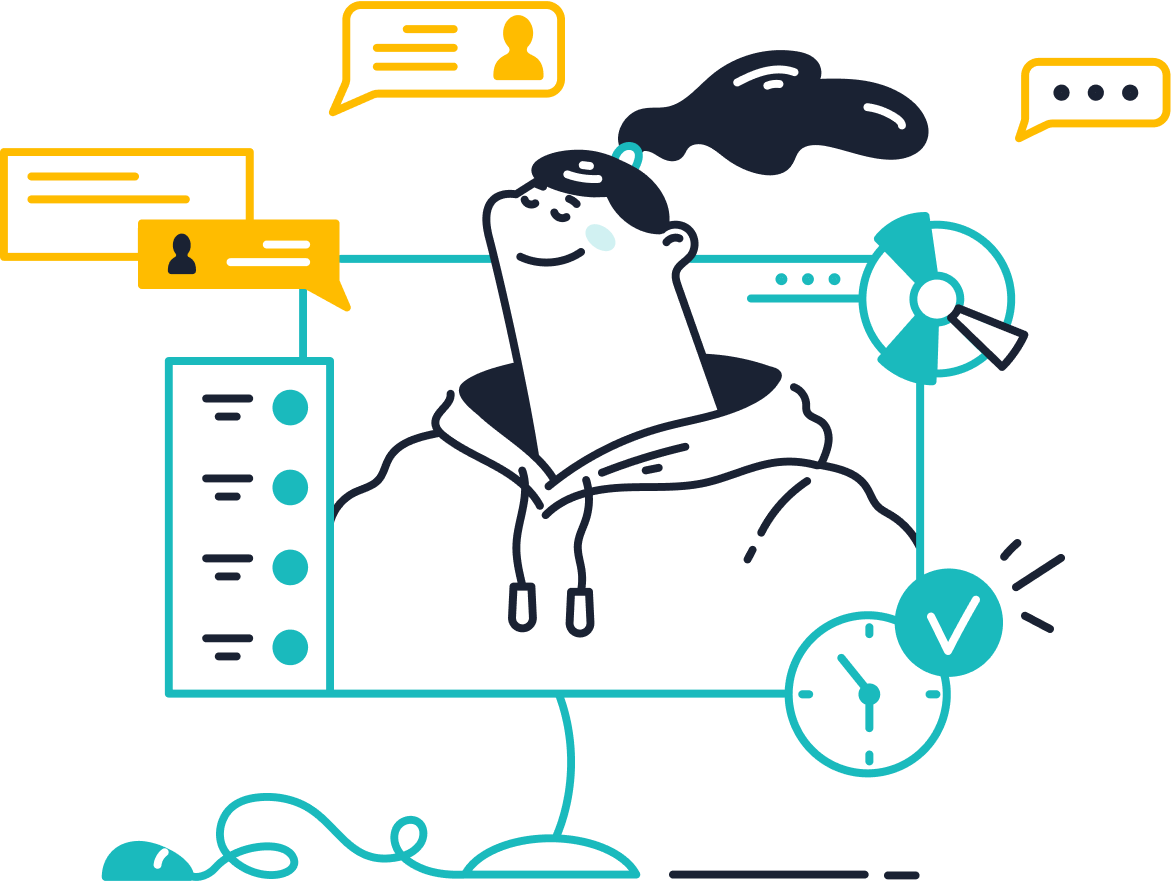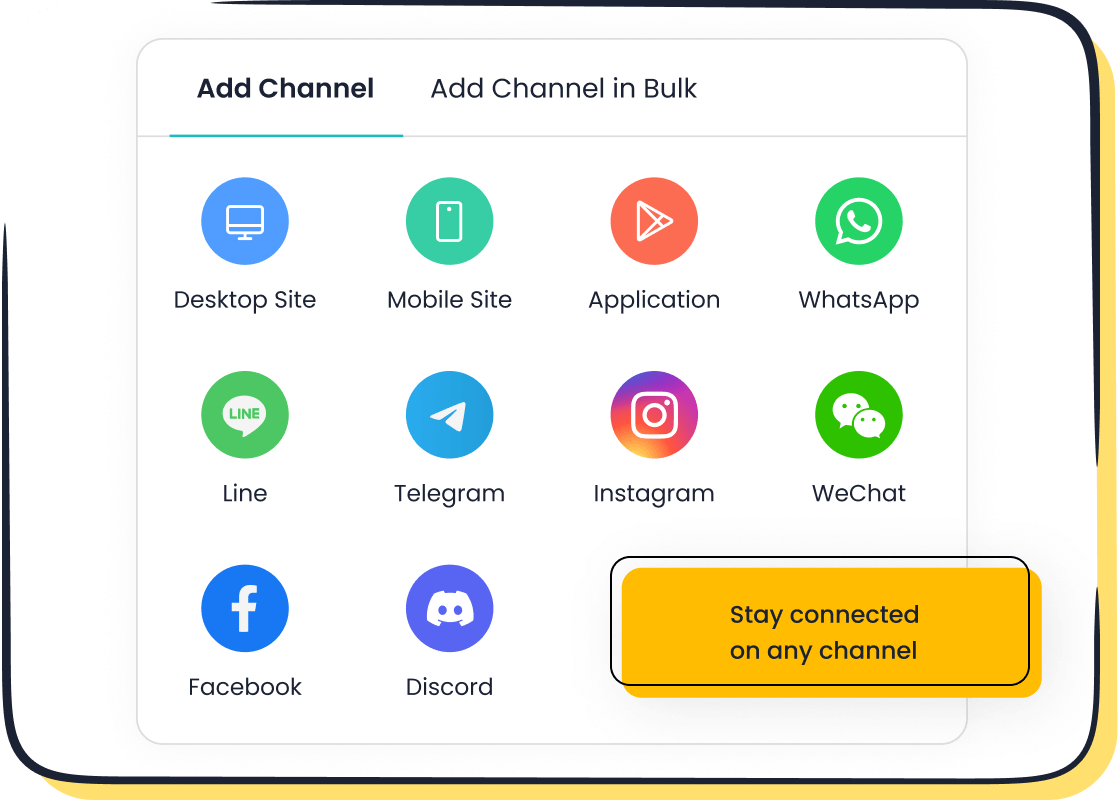How to Resolve Conflicts with Angry Clients Like a Pro

Dealing with angry clients can feel overwhelming, but knowing how to handle angry clients professionally is crucial for building trust and loyalty. When you approach conflicts with calmness and empathy, you not only resolve issues but also strengthen your relationship with the customer. De-escalation techniques play a vital role here. They help you manage irate customers smoothly, prevent conflicts from escalating, and safeguard your business's reputation. Companies that invest in de-escalation training often see better first-call resolution rates and fewer follow-up calls, boosting operational efficiency. Tools like Sobot’s Live Chat can further enhance these efforts by streamlining communication and ensuring no customer concern goes unnoticed.
Understanding Why Clients Become Angry
Common Triggers of Client Frustration
When dealing with angry customers, understanding what sets them off is half the battle. Research shows that frustration often stems from three key areas:
| Characteristic | Share of Respondents |
|---|---|
| Lack of effectiveness | 27% |
| Lack of speed | 12% |
| Lack of accuracy | 10% |

Imagine calling customer service and waiting forever, only to get an unhelpful response. That’s a recipe for frustration. Customers expect quick, accurate, and effective solutions. When these expectations aren’t met, emotions can run high. This is why tools like Sobot Live Chat are game-changers. By offering real-time responses and AI-powered assistance, they help businesses address concerns faster and more effectively, reducing the chances of escalation.
The Impact of Miscommunication on Escalations
Miscommunication is another major culprit behind angry customers. It’s not just about what you say but how you say it. A poorly worded email or a misunderstood tone can turn a minor issue into a full-blown conflict. Surveys reveal that 81% of people who’ve had a bad experience consider leaving negative feedback. Miscommunication, inadequate support, and long wait times top the list of complaints.

To avoid this, focus on clarity and empathy. For instance, Sobot’s omnichannel solution ensures all customer interactions are unified in one workspace. This reduces the risk of mixed messages and keeps communication consistent across platforms.
How Unmet Expectations Lead to Anger
Unmet expectations are like broken promises—they leave customers feeling disappointed and, often, angry. A case in point is Cover2 Apparel, which lost customers because it failed to adopt new technologies like AI. While competitors improved their services, Cover2 stuck to outdated methods, leading to dissatisfaction and revenue loss.
Customers today expect businesses to go the extra mile. Whether it’s offering 24/7 support or personalized solutions, meeting these expectations is crucial. Sobot’s AI-powered tools, like its Live Chat feature, help businesses stay ahead by providing instant, tailored responses. This not only resolves issues but also prevents anger from boiling over.
Step-by-Step Guide to De-escalate an Angry Customer

Stay Calm and Maintain Composure
When faced with angry customers, your ability to stay calm can make all the difference. Losing your composure only escalates the situation. Instead, focus on staying present and managing your emotions. Techniques like counting to ten or taking deep breaths can help you maintain a level head. Recognizing triggers—such as a raised voice or accusatory tone—allows you to respond thoughtfully rather than react impulsively.

A calm demeanor also sets the tone for the interaction. Customers often mirror your behavior, so staying composed can encourage them to do the same. For example, if a customer is upset about a delayed delivery, calmly acknowledging the issue and offering a solution can shift the conversation toward resolution. Tools like Sobot Live Chat can assist by providing real-time updates and ensuring you have all the information needed to address concerns effectively.
Practice Active Listening to Understand Concerns
Active listening is one of the most powerful skills for calming angry customers. It’s not just about hearing their words—it’s about understanding their emotions and concerns. When you listen actively, you show the customer that their issue matters. This builds trust and reduces tension.
Here’s how you can practice active listening skills:
- Focus fully on the customer: Avoid distractions and give them your undivided attention.
- Paraphrase their concerns: Repeat back what they’ve said to confirm your understanding.
- Ask clarifying questions: This ensures you grasp the details of the issue.
For instance, if a customer complains about a billing error, you might say, “I understand you’re frustrated about the incorrect charge. Let me look into this for you.” This approach not only validates their feelings but also reduces misunderstandings. Sobot’s omnichannel solution can further enhance communication by unifying customer interactions, making it easier to track and address concerns accurately.
Show Empathy and Acknowledge Their Feelings
Empathy is the cornerstone of de-escalation. When customers feel heard and understood, their anger often subsides. A simple acknowledgment like, “I can see why this would be frustrating,” can go a long way in diffusing tension.
Empathy isn’t just about words—it’s about your tone and body language too. Speak calmly and maintain a friendly demeanor. If you’re communicating through chat or email, choose positive language that reassures the customer. For example, instead of saying, “We can’t fix this right now,” try, “Here’s what we can do to resolve this for you.”

Sobot Live Chat makes it easier to show empathy by providing tools like satisfaction surveys and auto-translation for seamless communication. These features help you connect with customers on a deeper level, even in challenging situations.
Apologize Sincerely and Offer Reassurance
When dealing with angry customers, a heartfelt apology can work wonders. A sincere apology shows that you acknowledge their frustration and regret the inconvenience caused. It’s not just about saying “sorry” but about making the customer feel heard and valued. For example, if a customer complains about a delayed shipment, you could say, “I’m truly sorry for the delay. I understand how frustrating this must be, and I’ll do everything I can to make it right.”
A well-crafted apology often includes three key elements:
- Acknowledgment: Recognize the issue and its impact on the customer.
- Responsibility: Take ownership of the mistake without making excuses.
- Reassurance: Explain the steps you’re taking to resolve the problem and prevent it from happening again.

Studies show that customers are more likely to forgive and remain loyal when companies apologize sincerely and take responsibility. Proactively sending an apology email or message can also build trust, as it demonstrates accountability. Tools like Sobot Live Chat make this process seamless by enabling real-time communication and follow-ups, ensuring no customer concern goes unnoticed.
Provide Clear and Realistic Solutions
Once you’ve apologized, it’s time to focus on solutions. Angry customers don’t just want to hear “sorry”—they want to know how you’ll fix the problem. Providing clear and realistic solutions is essential for de-escalation. Start by identifying the root cause of the issue and offering actionable steps to resolve it. For instance, if a customer received a defective product, you could offer a replacement or refund while explaining how you’ll prevent similar issues in the future.
Here are some proven conflict resolution models to guide your approach:
| Model Name | Description |
|---|---|
| Conflict Resolution Process | Identify the source of conflict, communicate openly, brainstorm solutions, and monitor implementation. |
| Interest-Based Relational Model | Focus on the interests of both parties to promote collaboration and mutual understanding. |
| Clearing Model | Re-establish connection between parties to resolve disconnections effectively. |

Using these models can help you de-escalate conflicts and rebuild trust. Sobot’s omnichannel solution simplifies this process by unifying customer interactions across platforms. This ensures you have all the information needed to provide tailored solutions quickly. For example, Agilent, a global leader in life sciences, used Sobot’s tools to improve customer service efficiency by six times, achieving a 95% satisfaction score. This demonstrates how clear solutions and effective tools can turn conflicts into opportunities for growth.
Handling Situations Without Immediate Solutions
Sometimes, you may not have an immediate solution for an issue. That’s okay. What matters most is how you handle the situation and reassure your angry customers that their concerns are being addressed. Let’s explore how you can navigate these tricky moments.
Be Transparent About Limitations
Honesty goes a long way when you can’t resolve a problem right away. Customers appreciate transparency over vague promises. If there’s a delay or a limitation, explain it clearly. For example, if a product is out of stock, let the customer know when it will be available or suggest alternatives. This builds trust and shows you’re committed to finding a solution.
Here’s a tip: Avoid overpromising. Instead, focus on what you can do. For instance, Sobot’s omnichannel solution helps you track customer interactions across platforms. This ensures you have all the details to provide accurate updates, even when a resolution isn’t immediate. By keeping communication clear and consistent, you can prevent frustration from escalating.
Set Realistic Expectations for Resolution
When customers are upset, they want to know when their issue will be resolved. Setting realistic expectations is key. Be specific about timelines and next steps. For example, instead of saying, “We’ll fix this soon,” try, “We’ll have this resolved by Friday, and I’ll update you by then.”
You can also use tools like Sobot Live Chat to keep customers informed. Its real-time updates and unified workspace make it easier to manage expectations. Remember, it’s better to under-promise and over-deliver than the other way around. This approach not only helps de-escalate tension but also leaves customers feeling valued.
Follow Up Promptly to Reassure the Client
Following up shows customers that you care about their experience. After resolving the issue, check in to confirm everything is satisfactory. A quick message or call can make a big difference. You could say, “I just wanted to make sure everything is working fine now. Please let me know if there’s anything else I can do.”
Small gestures can also enhance the relationship. Offering a discount or exclusive feature can turn a negative experience into a positive one. For example:
- Confirm the resolution and ask for feedback.
- Offer a token of appreciation, like a discount.
- Follow up after a few weeks to maintain the connection.
Sobot’s tools, like satisfaction surveys and analytics, make follow-ups seamless. These features help you gather feedback and show customers that their opinions matter. Agilent, a global leader in life sciences, used Sobot’s solutions to achieve a 95% satisfaction score by focusing on follow-ups and proactive communication. This proves that staying connected can transform customer relationships.
Proactive Strategies for De-escalating Angry Customers

Train Teams in Conflict Resolution Techniques
Your customer service team is the first line of defense when it comes to handling angry customers. Equipping them with conflict resolution skills can make all the difference. Training helps your team understand how to listen actively, show empathy, and respond effectively. It also builds trust and strengthens relationships within the team, creating a positive work culture.
For example, research shows that training improves transparency and encourages problem-solving. When your team knows how to mediate and facilitate discussions, they can address issues before they escalate. This not only reduces stress but also boosts productivity. Imagine a scenario where a customer is upset about a billing error. A well-trained agent can calmly explain the situation, offer a solution, and reassure the customer, turning a negative experience into a positive one.
Leverage Sobot Live Chat for Seamless Communication
When customers are upset, they want quick and clear answers. Sobot Live Chat is a powerful tool that helps you meet these expectations. It allows your team to respond instantly across multiple channels, from websites to social media platforms like WhatsApp and Facebook. This ensures no customer concern goes unnoticed.

The platform’s AI-powered tools make it easier to provide personalized solutions. For instance, if a customer has a recurring issue, the unified workspace keeps all their previous interactions in one place. This helps your team address the problem efficiently without asking the customer to repeat themselves. Plus, features like auto-translation and satisfaction surveys ensure smooth communication, even with international clients. By using Sobot Live Chat, you can enhance customer satisfaction and foster loyalty.
Regularly Gather and Act on Customer Feedback
Feedback is a goldmine for improving your services. When you actively seek customer opinions, you show them that their voice matters. This can prevent future conflicts and help you refine your approach to de-escalating angry customers. Use tools like surveys, follow-up emails, or even direct conversations to gather insights.
For example, Agilent, a global leader in life sciences, used Sobot’s solutions to collect feedback and improve their operations. This proactive approach led to a 95% customer satisfaction score. Acting on feedback doesn’t just resolve issues—it builds trust and strengthens your relationship with customers. So, make it a habit to listen, learn, and adapt.
Create Clear Policies for Handling Complaints
Clear policies for handling complaints are essential for maintaining consistency and fairness. When your team knows exactly how to address customer issues, they can respond confidently and effectively. This not only reduces confusion but also builds trust with your customers. So, how do you create these policies?
-
Define the Process
Start by outlining the steps your team should follow when handling complaints. For example:- Acknowledge the issue immediately.
- Gather all necessary details from the customer.
- Offer a solution or escalate the matter if needed.
- Follow up to ensure the customer is satisfied.
Having a clear process ensures no step gets overlooked. Tools like Sobot Live Chat can help streamline this process by unifying customer interactions in one workspace. This makes it easier for your team to track complaints and respond promptly.
-
Set Response Time Standards
Customers value quick resolutions. According to a study by HubSpot, 90% of customers rate an "immediate" response as important when they have a question. Define specific timelines for acknowledging and resolving complaints. For instance, aim to respond to all inquiries within 24 hours. Sobot’s omnichannel solution can assist by automating responses and ensuring no message slips through the cracks. -
Train Your Team
Policies are only effective if your team understands them. Regular training sessions can help your staff master the art of complaint resolution. Role-playing exercises, for example, can prepare them for real-life scenarios. Sobot’s AI-powered tools, like its satisfaction surveys, can also provide insights into areas where your team might need improvement. -
Document and Share Policies
Make your policies accessible to everyone on your team. Use a shared document or internal portal to keep them updated. This ensures consistency across all customer interactions. With Sobot’s unified workspace, your team can easily access customer data and follow the outlined policies, ensuring a seamless experience for your clients.
By creating clear policies, you empower your team to handle complaints like pros. This not only improves customer satisfaction but also strengthens your brand’s reputation.
The Long-term Benefits of Professional De-escalation
Building Trust and Loyalty with Clients
When you handle angry customers with professionalism, you’re not just solving a problem—you’re building trust. Customers want to feel valued and heard, and resolving their complaints skillfully can strengthen their loyalty even more than if no issue had occurred in the first place. Think about it: when you turn a negative experience into a positive one, you show your customers that you genuinely care.
For example:
- Real-time strategies, like using Sobot Live Chat, address frustrations quickly, increasing the chances of customers returning.
- Skillful complaint handling boosts satisfaction, which often leads to referrals.

A study highlights how emotional connections play a huge role in loyalty. Customers who feel understood are more likely to stick around and recommend your business. By using tools that unify communication, like Sobot’s omnichannel solution, you can ensure every interaction builds trust and strengthens relationships.
Enhancing Your Brand’s Reputation
Your reputation is everything. When you handle conflicts effectively, you show the world that your brand values transparency and customer care. This authenticity builds trust and helps you stand out in a crowded market. Customers appreciate brands that align with their values and communicate openly, especially during challenging situations.
Here’s why this matters:
- Transparency gives customers peace of mind, making them more likely to support your brand.
- Engaging with customers helps you identify and resolve potential issues before they escalate.
For instance, Sobot’s tools, like satisfaction surveys and analytics, allow you to gather feedback and improve your services. This proactive approach not only enhances your reputation but also helps you navigate crises more effectively. Over time, these efforts create a positive image that attracts new customers and retains existing ones.
Reducing Stress for Customer Service Teams
Dealing with angry customers can be stressful for your team. However, when they’re equipped with the right tools and training, they feel more confident and empowered. De-escalation techniques, such as positive communication and active listening, can significantly reduce tension during interactions.
Studies show that training in conflict resolution lowers workplace stress. Employees who know how to manage conflicts proactively experience a more positive work environment. For example:
- De-escalation training reduces stress by helping teams handle conflicts before they escalate.
- Tools like Sobot Live Chat streamline communication, making it easier for agents to focus on solutions rather than juggling multiple platforms.
When your team feels supported, they perform better. This not only improves customer satisfaction but also creates a healthier, more productive workplace.
Mastering how to handle angry clients requires a blend of empathy, clear communication, and professionalism. By staying calm, listening actively, and offering realistic solutions, you can turn conflicts into opportunities to build trust. Training your team and using tools like Sobot Live Chat ensures seamless communication and faster resolutions.
| Key Steps in De-escalation Techniques | Description |
|---|---|
| Commitment by senior management | Leadership must endorse resources needed to educate staff and allow time for auditing interventions. |
| Implement workforce training | Training staff on new techniques and interventions is crucial. |
| Use debriefing techniques | Debriefing after incidents helps in learning and improving future responses. |
Apply these strategies to improve customer satisfaction and foster loyalty.
FAQ
What are the best ways to calm angry clients quickly?
The key is to stay calm and listen actively. Acknowledge their frustration and show empathy. Use tools like Sobot Live Chat to provide instant responses and real-time updates. Quick action reassures clients and prevents the situation from escalating further.
Tip: Always validate their feelings with phrases like, “I understand why this is upsetting.”
How can Sobot Live Chat help with angry clients?
Sobot Live Chat offers real-time communication across multiple channels. Its AI-powered tools help you respond faster and more accurately. Features like auto-translation and satisfaction surveys ensure seamless interactions, even with international clients. This reduces frustration and builds trust.
Why is empathy important in de-escalation techniques?
Empathy shows clients you care about their concerns. It helps diffuse anger and creates a connection. For example, saying, “I see how this delay has impacted you,” can instantly calm a tense situation. Empathy is a cornerstone of professional conflict resolution.
What should I do if I can’t resolve a client’s issue immediately?
Be honest about limitations and set realistic expectations. Let them know when they can expect a resolution. Tools like Sobot Live Chat allow you to keep clients updated and track interactions, ensuring no concern is overlooked.
How does training improve handling angry clients?
Training equips your team with conflict resolution skills like active listening and clear communication. It reduces stress and boosts confidence. For example, role-playing exercises can prepare agents for real-life scenarios. Sobot’s tools, like satisfaction surveys, help identify areas for improvement.
Note: Well-trained teams handle conflicts faster, improving customer satisfaction.
See Also
Effective Strategies for Managing Live Chat Representatives
Ten Strategies to Enhance Customer Satisfaction via Live Chat
Ten Guidelines for Selecting Social Media Support Tools
Ten Essential Steps for Implementing Omnichannel Support Systems
Best Practices for Effective Quality Management in Call Centers